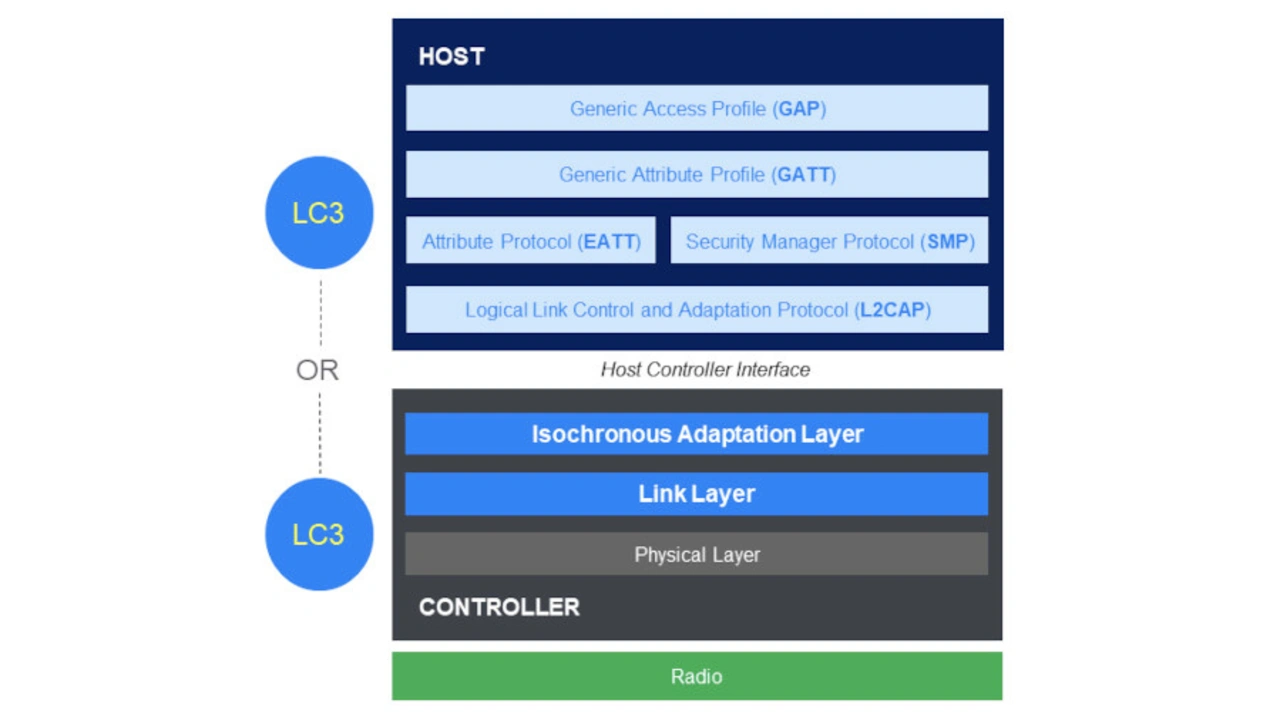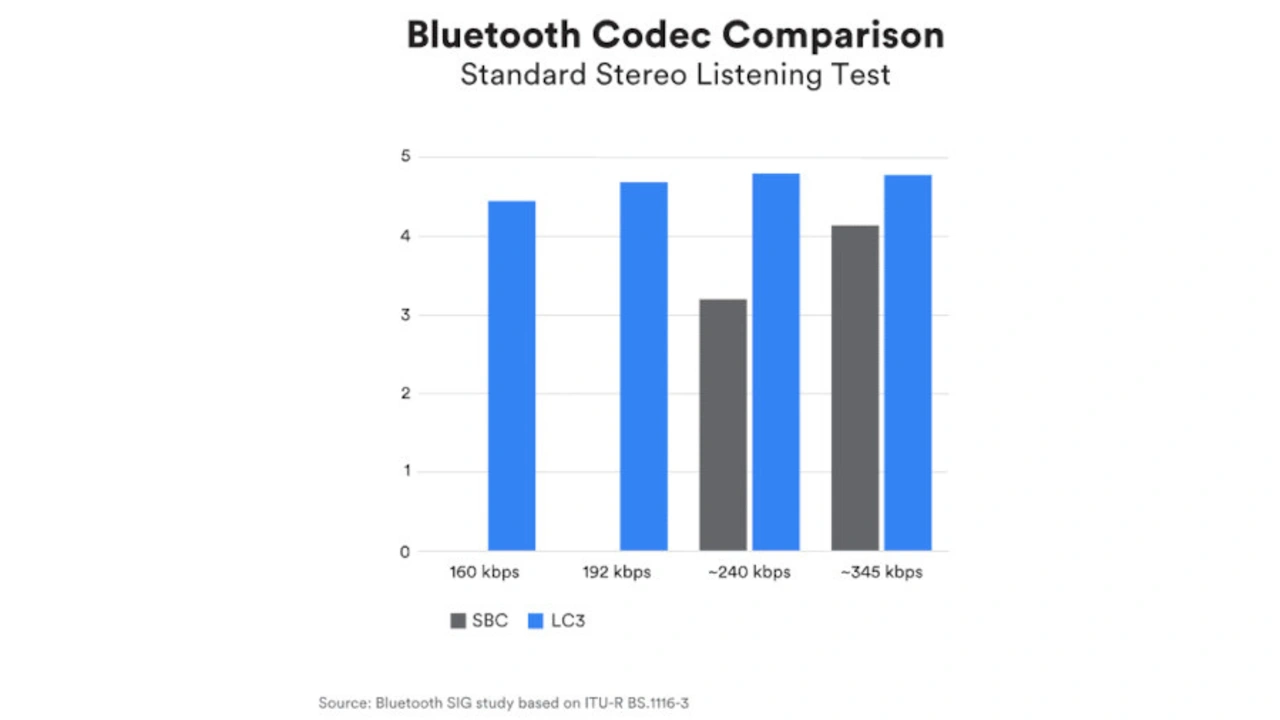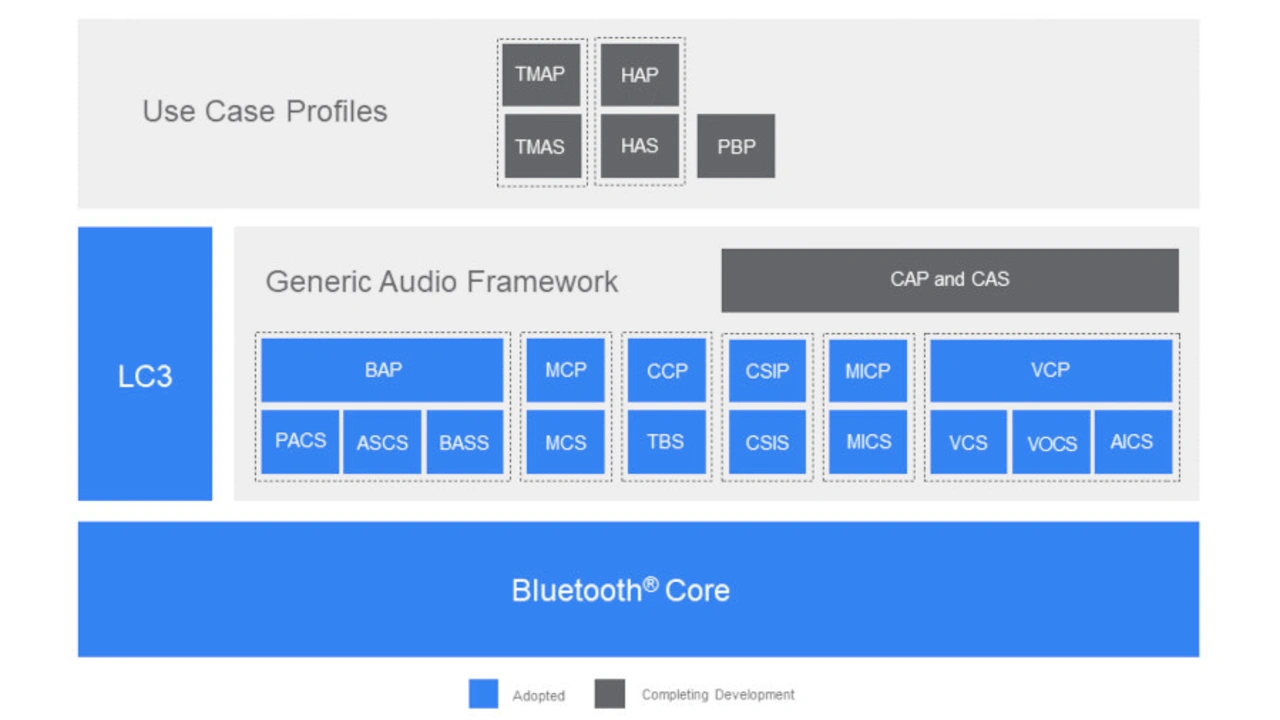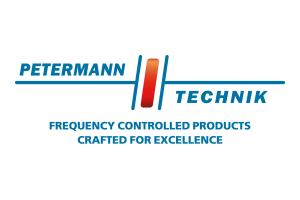Wireless Audio Connectivity
Bluetooth LE Audio
Fortsetzung des Artikels von Teil 1
The Technical Components of LE Audio
LE Audio requires certain features of the Bluetooth LE stack to be supported. Certain other features are optional and may improve user experience if available.

The Low Complexity Communications Codec (LC3) is a modern audio codec which provides a better listening experience to the SBC codec using by Bluetooth Classic Audio but requiring about half the bandwidth. LC3 It be implemented in either the host or the controller part of a Bluetooth LE stack and exhibits end to end latency of about 25 ms. A healthy variety of sample rates and bit depths are supported for a wide range of different audio applications. LC3 licencing is covered by the Bluetooth SIG licence that all products must be granted.

Isochronous channels are a feature of the Link Layer and their support is mandatory. Isochronous channels allow the transmission of different audio content at slightly different times but for it to be rendered as audio by receiving devices perfectly in sync with each other. Isochronous streams are members of isochronous groups, rendering of all streams in a group happens at the same time and there are two types of isochronous stream and group, connected and broadcast. Isochronous communication works by specifying a delay which the receiving device must wait for before rendering. By systematically reducing that delay parameter as each stream in a group is serviced, rendering of each frame ultimately takes place at the same time across all streams in the group.
The Isochronous Adaptation layer allows source and sink devices to use different frame intervals, performs fragmentation and reassembly and reconstructs the original frame timing associated with received packets.
The Enhanced Attribute Protocol allows parallel execution of attribute protocol operations so that there's no risk of blocking operations impacting the user experience.
Subrated Connections are another feature of the Link Layer. Their support is not mandatory in LE Audio but can improve user experience in some situations. Subrated connections allow devices to switch from a power-saving low duty cycle to a high-bandwidth high duty cycle more or less instantaneously which means when the phone rings you'll hear it right away in your hearing aid but not have to waste power maintaining an expensive high bandwidth connection in anticipation for when this does happen.
LE Audio Specifications
LE Audio was designed to act as a generalised, modular framework for all types of current and future audio products. It consists of a collection of different specifications, which are summarised next.

The Bluetooth Core Specification defines key features such as isochronous channels and the isochronous adaptation layer.
The LC3 codec has its own specification.
The generic audio framework includes a collection of different profiles and services:
- The Basic Audio Profile (BAP) covers the procedures for establishing audio streams of both the unicast and broadcast types.
- PACS, the Published Audio Capabilities Service contains data items which describe a device's audio capabilities such as which sample rates it supports. Other devices can discover these capabililities when setting up unicast audio streams.
- ASCS, the Audio Stream Control Service allows an audio stream endpoint (ASE) of a unicast stream to be configured and controlled. An ASE has a state machine with states like Idle, Codec Configured and Streaming and ASCS supports operations that allow a Unicast audio Initiator to change between states.
- BASS, the Broadcast Audio Scan Service defines the scan delegation and broadcast assistant system which helps with the discovery of broadcast audio streams. It can also sometimes be used to wirelessly distribute the broadcast code which is used to create the session encryption key for encrypted broadcast streams.
- MCP and MCS, the Media Control Profile and Service allow the remote control of media players. They use the concept of tracks and a media state machine to provide control of the audio. The state machine allows a device using the Media Control Profile to transition a media source through playing, paused, stopped and seeking states like Fast Forward. A user can also search for tracks, modify play order and adjust the playback speed.
- CCP, the Call Control Profile defines procedures for wirelessly controlling phone calls. This includes obvious things like making or answering a call but it also lets you do things like discover the name of the service provider which could be a mobile network operator for example, the bearer technology in use like 3G, 4G or Wi-Fi and the signal strength. This makes it easy for client devices to provide a good user experience.
- TBS is the Telephone Bearer Service and it's used with CCP. It gives access to telephone call control status for bearers on devices that can make and receive phone calls.
- CSIP and CSIS are a profile and service concerned with Coordinated Set Identification. They define how the coordinated set concept works.
- MICP and MICS define microphone control procedures, including operations like muting and unmuting individual or groups of microphones.
- VCP, VCS, VOCS and AICS are concerned with volume control, volume offsets and audio input control. AICS deals with the control of all manner of audio input (e.g. HDMI), not just Bluetooth audio inputs.
- CAP and CAS are the Common Audio Profile and Service. There are many common issues across the various profiles and aspects of unicast and broadcast audio streams. CAP is where these common issues get dealt with and the profile acts like the glue for various use cases that span other profiles.
Also currently in development are profiles and services for Telephony and Media Audio, Hearing Access and the Public Broadcast Profile.
- The Telephony and Media Profile pulls together combinations of lower level profiles to allow the establishment of configuration settings for various conversational, streaming, and broadcast audio telephony and media products. This includes products such as headsets, car kits, TVs, smartphones and personal computers.
- Hearing Access includes but is not limited to hearing aids. It also covers complimentary products such as doorbells which can generate Bluetooth immediate alert notifications which hearing aids can respond to. In fact Hearing Access refers to the fact that there is a whole ecosystem of hearing related products and the LE Audio standardised profiles and services will make them interoperable.
- The Public Broadcast TV Profile defines program metadata to aid stream discovery and selection in public, unencrypted TV.
Status of LE Audio
The Bluetooth Core Specification has been updated and released to include those features that are required by LE Audio such as isochronous channels. A specification for the LC3 codec can be downloaded today. The greater majority of profile and service specifications are also complete and can be downloaded now. A few specifications are still in development and should be released in the near future.
Over 20 silicon companies have announced chips that support LE Audio. LC3 reference code and test tools are available. Smartphones which support isochronous channels are already appearing in the marketplace and it is expected that it will be possible to perform software updates to give them full support for LE Audio.
LE Audio is a landmark new feature of Bluetooth technology which will improve listener experience, enable new use cases and product types and standardise the hearing access ecosystem.
Literature
[1] Learn About Bluetooth – Introducing Bluetooth Audio Sharing. Bluetooth SIG, Website, www.bluetooth.com/learn-about-bluetooth/recent-enhancements/le-audio/audio-sharing/
[2] Learn About Bluetooth – Audio Streaming. Bluetooth SIG, Website, www.bluetooth.com/learn-about-bluetooth/solutions/audio-streaming/
[3] Specifications – Specifications List. Bluetooth SIG, Website, www.bluetooth.com/specifications/specs/
The author

Martin Woolley
works for the Bluetooth SIG, the technical standards body for Bluetooth technology. He’s an industry veteran with over 30 years’ experience and has a degree in Computing and Mathematics. Martin is the Bluetooth SIG's Senior Developer Relations Manager for the EMEA region and is responsible for informing, educating and supporting developers in the region.
@bluetooth_mdw
- Bluetooth LE Audio
- The Technical Components of LE Audio





